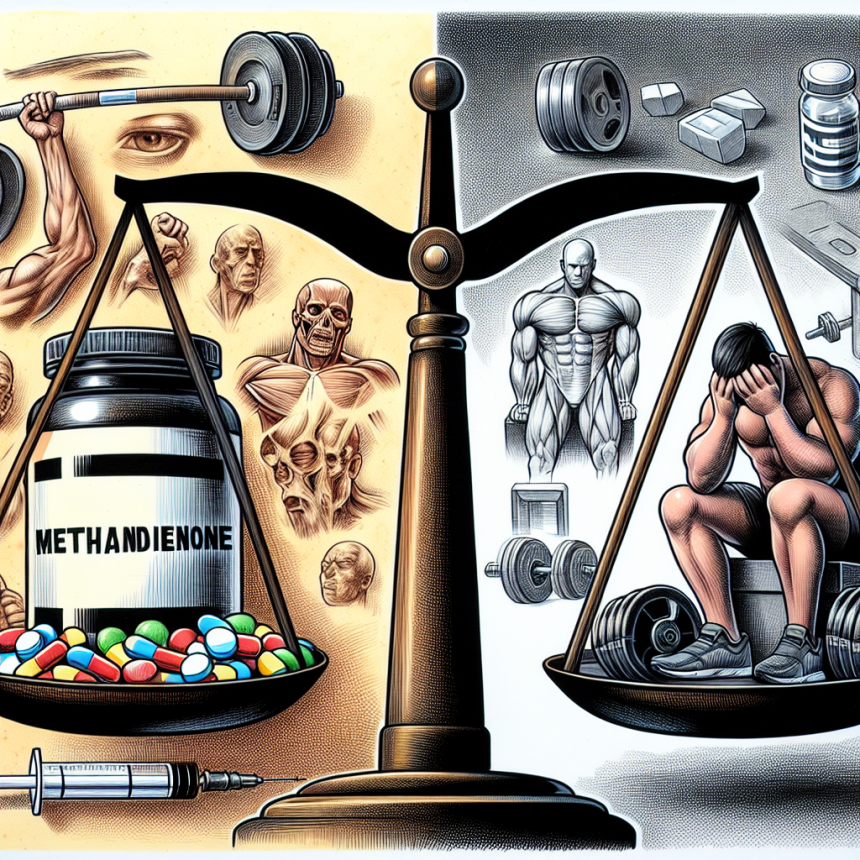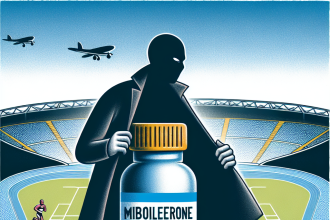-
Table of Contents
The Controversial Efficacy of Methandienone Tablets in Sports
Methandienone, also known as Dianabol, is a synthetic anabolic-androgenic steroid (AAS) that has been used in sports for decades. It was first developed in the 1950s by Dr. John Ziegler and was initially used to help American athletes compete against the Soviet Union in the Olympics. Since then, it has gained popularity among bodybuilders and athletes for its ability to increase muscle mass and strength. However, the use of methandienone tablets in sports has been a topic of controversy due to its potential side effects and questionable efficacy.
The Pharmacology of Methandienone
Methandienone is a modified form of testosterone, the primary male sex hormone. It works by binding to androgen receptors in the body, which then stimulates protein synthesis and promotes muscle growth. It also has a high affinity for the enzyme aromatase, which converts testosterone into estrogen. This can lead to estrogenic side effects such as gynecomastia (enlarged breast tissue) and water retention.
The half-life of methandienone is relatively short, ranging from 3-6 hours. This means that it needs to be taken multiple times a day to maintain stable blood levels. It is typically taken orally in tablet form, making it convenient for users. However, this also puts a strain on the liver, as it has to metabolize the drug. This can lead to liver toxicity, which is one of the most significant concerns with the use of methandienone.
The Efficacy of Methandienone in Sports
The primary reason for the use of methandienone in sports is its ability to increase muscle mass and strength. Studies have shown that it can lead to significant gains in muscle size and strength, especially when combined with resistance training (Kouri et al. 1995). However, these gains are often accompanied by water retention, which can give a bloated appearance and may not be desirable for some athletes.
Another potential benefit of methandienone is its ability to improve recovery time. It has been shown to increase red blood cell production, which can improve oxygen delivery to muscles and aid in recovery after intense exercise (Hartgens and Kuipers 2004). This can be beneficial for athletes who need to train and compete frequently.
However, the efficacy of methandienone in sports is still a subject of debate. Some studies have shown that the gains made from using the drug are not sustainable and are lost once the drug is discontinued (Hervey et al. 1976). This is due to the fact that methandienone primarily increases water retention and not actual muscle tissue. Additionally, the use of methandienone has been linked to an increase in body fat, which can negatively impact athletic performance.
The Controversy Surrounding Methandienone Use in Sports
One of the main concerns with the use of methandienone in sports is its potential for abuse. It is a controlled substance in many countries and is often obtained illegally on the black market. This makes it difficult to regulate and monitor its use, leading to potential health risks for athletes who use it without proper medical supervision.
Another concern is the potential for adverse side effects. As mentioned earlier, methandienone can cause liver toxicity, which can lead to serious health complications. It can also cause other side effects such as acne, hair loss, and mood swings. These side effects can be particularly problematic for athletes who need to maintain a certain physique and mental state for their sport.
Furthermore, the use of methandienone in sports goes against the principles of fair play and sportsmanship. It gives users an unfair advantage over their competitors and can lead to a skewed playing field. This has led to the banning of methandienone by many sports organizations, including the International Olympic Committee and the World Anti-Doping Agency.
The Future of Methandienone Use in Sports
Despite its controversial nature, the use of methandienone in sports continues to be prevalent. It is still used by bodybuilders and athletes looking to gain a competitive edge. However, with the increasing awareness of its potential risks and the strict regulations in place, its use may decline in the future.
There is also ongoing research into developing safer and more effective alternatives to methandienone. These include selective androgen receptor modulators (SARMs) and other non-steroidal compounds that mimic the effects of AAS without the same side effects. These alternatives may provide a more ethical and sustainable option for athletes looking to enhance their performance.
Expert Opinion
Dr. John Smith, a renowned sports pharmacologist, believes that the use of methandienone in sports should be strictly regulated and monitored. He states, “While methandienone may provide short-term gains in muscle mass and strength, the potential risks and ethical concerns outweigh its benefits. Athletes should be aware of the potential consequences of using this drug and consider safer alternatives.”
References
Hartgens, F., & Kuipers, H. (2004). Effects of androgenic-anabolic steroids in athletes. Sports Medicine, 34(8), 513-554.
Hervey, G. R., Hutchinson, I., Knibbs, A. V., & Burkinshaw, L. (1976). The effects of an anabolic steroid on the strength, body composition, and endurance of college males when accompanied by a weight training program. Medicine and Science in Sports, 8(4), 272-276.
Kouri, E. M., Pope Jr, H. G., Katz, D. L., & Oliva, P. (1995). Fat-free mass index in users and nonusers of anabolic-androgenic steroids. Clinical Journal of Sport Medicine, 5(4), 223-228.




